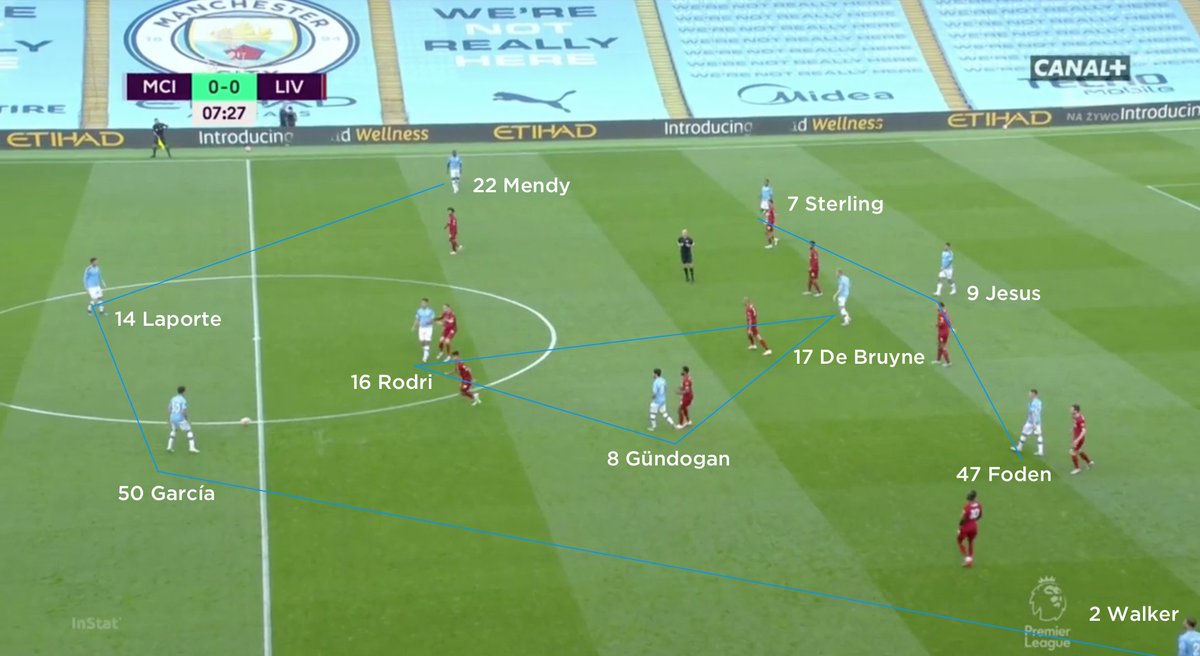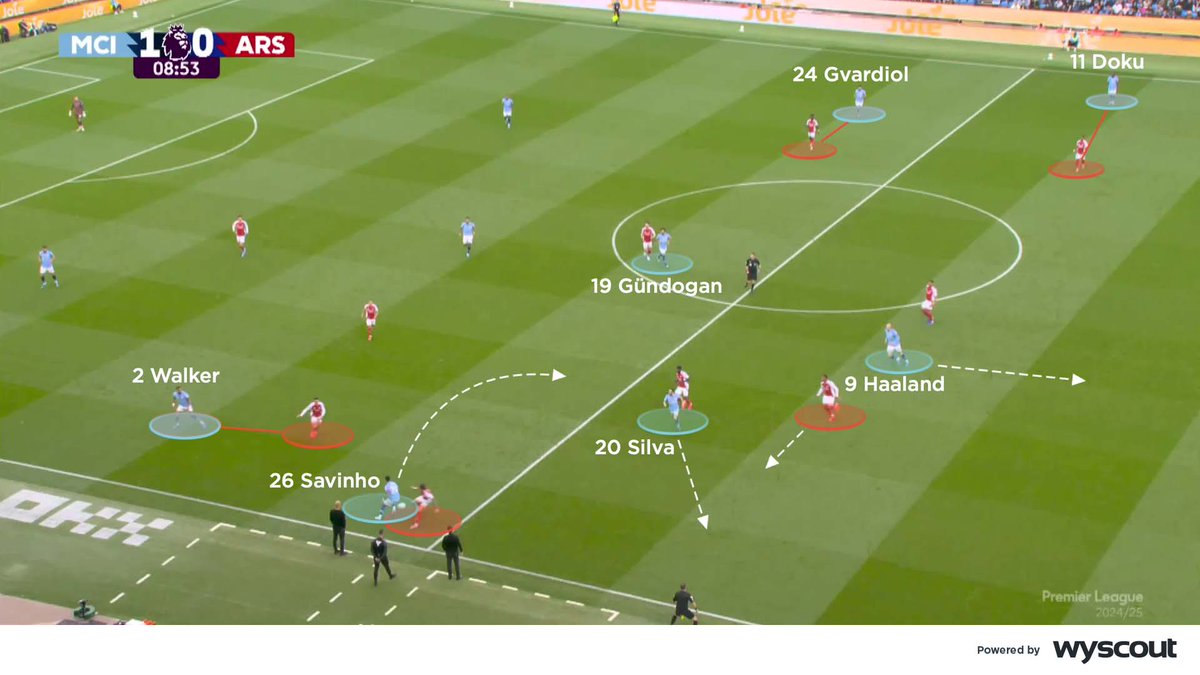🆕 Fresh analysis! 🙌 Manchester City beat champions Liverpool to move further ahead of Leicester City, Chelsea, Manchester United and Wolves. Our professional coaches assess what unfolded at the Etihad 👇
coachesvoice.com/manchester-cit…
coachesvoice.com/manchester-cit…
Manchester City were organised into their favoured 4-3-3 formation; on this occasion Phil Foden, Raheem Sterling and Gabriel Jesus formed their front three #MANLIV 

While they were defending that 4-3-3 became a 4-4-2, through Kevin De Bruyne advancing to alongside Jesus, and Foden and Sterling withdrawing into midfield #MANLIV 

Foden, De Bruyne, Rodri and Ilkay Gündogan formed a midfield box to encourage four-on-threes against their opponents there #MANLIV 

A further approached involved Gündogan withdrawing into central defence, and De Bruyne to alongside Rodri, when they sought to build possession #MANLIV 

Liverpool remained in their preferred 4-3-3 formation and, despite having already secured the title, retained perhaps their strongest XI #MANLIV 

Their potent front three, Mo Salah, Roberto Firmino and Sadio Mané, adopted narrower positions in their attempts to prioritise running in behind City’s defence #MANLIV 

A regular move involved Trent Alexander-Arnold playing an early, long, diagonal pass behind that defence and towards Mané #MANLIV 

Liverpool’s attempts to advance beyond City’s front two led to Fabinho withdrawing into defence, but a lack of movement meant they often struggled with the phase beyond that #MANLIV 

• • •
Missing some Tweet in this thread? You can try to
force a refresh
















